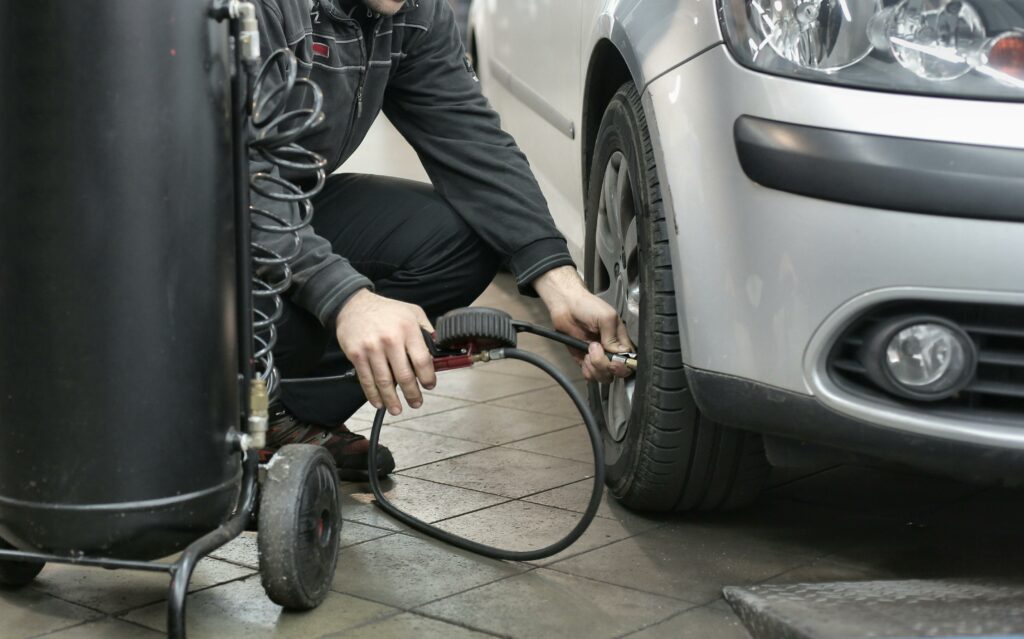How to Prepare Your Vehicle for Seasonal Changes
Because cars don’t care that you’re busy — they’ll still protest when the weather shifts.Most of us only think about car maintenance when something goes wrong — the battery dies, the tires feel wobbly, the engine starts making That Noise™. But here’s the thing: your car feels the seasons more than you do.

Temperature swings, wet roads, salty streets, and hot sun all mess with how your vehicle runs, handles, and lasts. If you wait until something breaks, it’s already too late. Prepping your car as the seasons change isn’t just smart — it saves money, time, and stress.
Here’s how to get your car ready, season by season — no mechanic degree required.
Fall: Get Ahead of What Winter’s About to Throw at You
Fall is the “prep season.” It’s when you check your systems before cold weather makes them unforgiving.
What to do:
- Check your battery. Cold weather drains battery strength. If yours is over 3 years old, have it tested.
- Inspect your tires. Tread depth matters on wet and icy roads. Fall is a good time to rotate or replace them.
- Top off all fluids. Especially antifreeze and windshield washer fluid. You’ll need both.
- Replace your wiper blades. If they streak in the fall drizzle, they’ll be useless in snow.
- Test your heater and defroster. Find out now if they’re weak — not during your first frosty morning commute.
Bonus tip: Toss a blanket, scraper, and small flashlight into the trunk. Trust me, future-you will be grateful.
Winter: Keep It Running, Keep It Safe
Winter is brutal. The cold doesn’t just make your hands ache — it stiffens oil, saps battery life, and turns every minor issue into a potential problem.
Winter prep musts:
- Switch to winter tires if needed. All-seasons are fine for light snow, but winter tires make a huge difference in traction and braking.
- Keep your gas tank at least half full. It helps prevent fuel lines from freezing.
- Check tire pressure weekly. Cold air deflates tires faster than you think.
- Pack an emergency kit. Jumper cables, snacks, gloves, water, a shovel, and kitty litter (for traction) can be a lifesaver if you get stuck.
- Let your car warm up — gently. 1–2 minutes is enough to loosen things up. No need to idle for 15.
Oh — and always, always keep a scraper and brush in the car. Don’t be the person clawing ice with a Starbucks lid.
Spring: Clean, Check, and Recover
Spring isn’t just about flowers and allergy meds. It’s the season where you undo winter’s damage and get ready for road trips.
Spring checklist:
- Wash the undercarriage. Salt buildup can rust your frame and brake lines. A thorough wash helps preserve your car long-term.
- Check brakes and suspension. Winter potholes are rough. Listen for squeaks and thuds, and don’t ignore “feels off” handling.
- Swap out winter tires. If you used snow tires, store them properly and put your all-seasons back on.
- Top off A/C refrigerant. Don’t wait for the first hot day to find out your A/C is weak.
- Clean out the cabin. Declutter. Replace cabin air filters. Let your car breathe again.
Spring is also a good time to check your maintenance schedule: oil change, transmission fluid, filters, and more.
Summer: Heat-Proof Your Ride
Summer may seem easier on cars — no ice, no salt — but heat is its own kind of brutal.
Summer prep essentials:
- Check coolant levels and radiator condition. Overheating is one of the most common summer breakdowns.
- Test your A/C. If it’s blowing lukewarm, it’s probably low on refrigerant or has a slow leak.
- Inspect hoses and belts. Heat causes rubber to dry, crack, or snap under tension.
- Keep an eye on tire pressure. Hot air expands, and overinflated tires wear unevenly or worse — blow out.
- Carry water and a sunshade. For you and your passengers. Leather seats + direct sun = ouch.
Pro move: If you live somewhere really hot, park in the shade or crack the windows slightly to reduce oven-like buildup.
Year-Round Basics That Never Go Out of Season
No matter the weather, keep up with:
- Oil changes (follow your car’s manual, not just the sticker)
- Brake checks (especially if you hear squeaking or grinding)
- Battery checks (especially if you take lots of short trips)
- Wiper fluid and tire rotation every few thousand miles
And keep a list of emergency numbers in your glovebox: tow company, insurance, and a trusted mechanic.
Final Thoughts: Treat Your Car Like It Treats You
You don’t need to be obsessive. You don’t need to become the “car friend” in your group. But seasonal care? That’s just being smart.
Because here’s the truth: your car does a lot more for you than you realize. It gets you to work, to the store, to your people. The least we can do is help it handle the seasons like a champ.
A few hours a year. A checklist or two. And suddenly, breakdowns are rare, costs are lower, and every season feels a little smoother behind the wheel.







